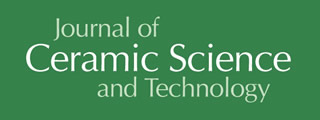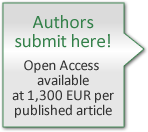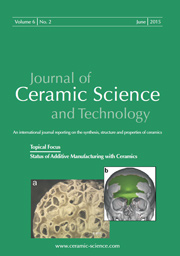Articles
All articles | Recent articles
Hybrid Laser Ablation of Al2O3 Applying Simultaneous Argon Plasma Treatment at Atmospheric Pressure
C. Gerhard1, S. Roux2, F. Peters3, S. Brückner1, S. Wieneke3, W. Viöl4
1 Clausthal University of Technology, Institute of Energy Research and Physical Technologies, Leibnizstrasse 4, 38678 Clausthal-Zellerfeld, Germany
2 Institut d'Optique Graduate School, RD 128 - Campus Polytechnique, 2, Avenue Augustin Fresnel, 91127 Palaiseau Cedex, France
3 University of Applied Sciences and Arts, Laboratory of Laser and Plasma Technologies, Von-Ossietzky-Strasse 99, 37085 Göttingen, Germany
4 Fraunhofer Institute for Surface Engineering and Thin Films, Application Center for Plasma and Photonic, Von-Ossietzky-Strasse 99, 37085 Göttingen, Germany
received September 24, 2012, received in revised form November 16, 2012, accepted January 9, 2013
Vol. 4, No. 1, Pages 19-24 DOI: 10.4416/JCST2012-00034a
Abstract
In this work, we present a hybrid laser-plasma ablation technique for material processing of ceramics. Atmospheric pressure argon plasma treatment as well as laser ablation and hybrid laser-plasma ablation experiments were performed on aluminium oxide in order to investigate the impact of the assisting plasma in terms of material removal efficiency and energy-related aspects. It was shown that by means of pure plasma treatment, surface roughness was decreased, resulting in an increase in surface energy and polarity, respectively. Further, by simultaneously applying a plasma beam at atmospheric pressure to a laser ablation process, the ablated area on the aluminium oxide surface was increased while the form error was partially reduced. Spectroscopic measurements of the ablation plume for pure laser ablation and laser-plasma ablation were performed. It was shown that with the assisting plasma, characteristic spectral lines of aluminium were intensified. Further, other Al-spectral lines that were not observed in the case of pure laser ablation were detected, corresponding to higher material removal owing to energetic synergies of both the laser ablation process and the assisting plasma.
![]() Download Full Article (PDF)
Download Full Article (PDF)
Keywords
Aluminium oxide, laser ablation, atmospheric pressure plasma, hybrid laser-plasma ablation
References
1 Lee, J.-M., Cho, I.-T., Lee, J.-H., Cheong, W.-S., Hwang, C.-S., Kwon, H.-I.: Comparative study of electrical instabilities in top-gate InGaZnO thin film transistors with Al2O3 and Al2O3/SiNx gate dielectrics, Appl. Phys. Lett., 94, 222112, (2009).
2 Khan, J.: A lapping and polishing process to achieve high quality alumina surfaces for applications in device fabrication, Thin Solid Films, 220, 222 – 226, (1992).
3 Kawakami, K., Suda, M., Aihra, M., Fukuoka, H., Hagiwara, Y., Tekeshita, K.: Electrical detection of end point in polishing process of thin film heads, J. Appl. Phys., 61, 4163 – 4166, (1987).
4 Tönshoff, H.K., Emmelmann, C.: Laser cutting of advanced ceramics, CIRP Ann., 38, 219 – 222, (1989).
5 Perrie, W., Rushton, A., Gill, M., Fox, P., O'Neill, W.: Femtosecond laser micro-structuring of alumina ceramic, Appl. Surf. Sci., 248, 213 – 217, (2005).
6 Kim, S.H., Sohn, I.-B., Jeong, S.: Ablation characteristics of aluminum oxide and nitride ceramics during femtosecond laser micromachining, Appl. Surf. Sci., 255, 9717 – 9720, (2009).
7 Kim, S.H., Balasubramani, T., Sohn, I.-B., Noh, Y.-C., Lee, J., Lee, J.B., Jeong, S: Precision microfabrication of AlN and Al2O3 ceramics by femtosecond laser ablation. In: Proceedings of SPIE 6879, 2008.
8 Ho, C.Y., Lu, J.K.: A closed form solution for laser drilling of silicon nitride and alumina ceramics, J. Mater. Process. Tech., 140, 260 – 263, (2003).
9 Klimentov, S.M., Garnov, S.V., Kononenko, T.V., Konov, V.I., Pivovarov, P.A., Dausinger, F.: High rate deep channel ablative formation by picosecond-nanosecond combined laser pulses, Appl. Phys. A, 69 [Suppl.], S633 – S636, (1999).
10 Kononenko, T.V., Garnov, S.V., Klimentov, S.M., Konov, V.I., Loubnin, E.N., Dausinger, F., Raiber, A., Taut C.: Laser ablation of metals and ceramics in picosecond-nanosecond pulse width in the presence of different ambient atmospheres, Appl. Surf. Sci., 109/110, 48 – 51, (1997).
11 Geiger, M., Becker, W., Rebhan, T., Hutfless, J., Lutz, N.: Increase of efficiency for the XeCl excimer laser ablation of ceramics, Appl. Surf. Sci., 96 – 98, 309 – 315, (1996).
12 Viöl, W., Wieneke, S., Damm, R., Brückner, S.: Hollow funnel shaped plasma generator, WO 2011095245 (A1), 2011.
13 Brückner, S., Rösner, S., Gerhard, C., Wieneke, S., Viöl, W.: Plasma-based ionisation spectroscopy for material analysis, Mater. Test., 53, 639 – 642, (2011).
14 Oliveira, V., Orlianges, J.C., Catherinot, A., Conde, O., Vilar, R.: Laser ablation of Al2O3-TiC: a spectroscopic investigation, Appl. Surf. Sci., 186, 309 – 314, (2002).
15 Gerhard, C., Roux, S., Brückner, S., Wieneke, S., Viöl, W.: Low-temperature atmospheric pressure argon plasma treatment and hybrid laser-plasma ablation of barite crown and heavy flint glass, Appl. Optics, 51, 3847 – 3852, (2012).
16 Mohri, N., Fukuzawa, Y., Tani, T., Saito, N., Furutani, K.: Assisting electrode method for machining insulating ceramics, CIRP Ann., 45, 201 – 204, (1996).
17 Lawrence, J., Li, L.: Wettability characteristics of an Al2O3/SiO2-based ceramic modified with CO2, Nd:YAG, excimer and high-power diode lasers, J. Phys. D., 32, 1075 – 1082, (1999).
18 Kaelble, D.H.: Peel adhesion: influence of surface energies and adhesive rheology, J. Adhes. Sci. Technol., 1, 102 – 123, (1969).
19 Owens, D.K., Wendt, R.C.: Estimation of the surface free energy of polymers, J. Appl. Polym. Sci., 13, 1741 – 1747, (1969).
20 Roth, J.R.: Industrial Plasma Engineering Vol. 2. 1st edition. Institute of Physics Publishing, London, 2001.
21 Agathopoulos, S., Nikolopoulos, P.: Wettability and interfacial interactions in bioceramic-body-liquid systems, J. Biomed. Mater. Res., 29, 421 – 429, (1995).
22 Gerhard, C., Roux, S., Brückner, S., Wieneke, S., Viöl, W.: Atmospheric pressure argon plasma-assisted enhancement of laser ablation of aluminum, Appl. Phys. A, 108, 107 – 112, (2012).
23 Bogaerts, A., Gijbels, R.: Comparison of argon and neon as discharge gases in a direct-current glow discharge – a mathematical simulation, Spectrochim. Acta B, 52, 553 – 565, (1997).
24 Rains, R.K., Kadlec, R.H.: The reduction of Al2O3 to aluminum in a plasma, Metall. Mater. Trans. B, 1, 1501 – 1506, (1970).
25 Fridman, A.: Plasma Chemistry. 1st edition. Cambridge University Press, Cambridge, 2008.
26 Bues, I., Haag, T., Richter, J.: Transition probabilities, broadening and shifting of neutral argon lines. In: Institut für Experimentalphysik der Universität Kiel Technical Report. Christian-Albrechts-Universität, Kiel, Germany, 1969.
27 Kaufman, V., Hagan, L.: Spectrum and energy levels of single ionized aluminum (Al II), J. Opt. Soc. Am., 69, 232 – 239, (1979).
28 Sawyer, R.A., Paschen, F.: The first spark spectrum of the aluminium Al II, (in German), Ann. Phys., 389, 1 – 19, (1927).
29 Isberg, B.: The spectrum of doubly ionized aluminium, Al III, Ark. Fys., 35, 551 – 562, (1968).
30 Eriksson, K.B.S., Isberg, H.B.S.: The spectrum of atomic aluminium, Al I, Ark. Fys., 23, 527 – 542, (1963).
Copyright
Göller Verlag GmbH


